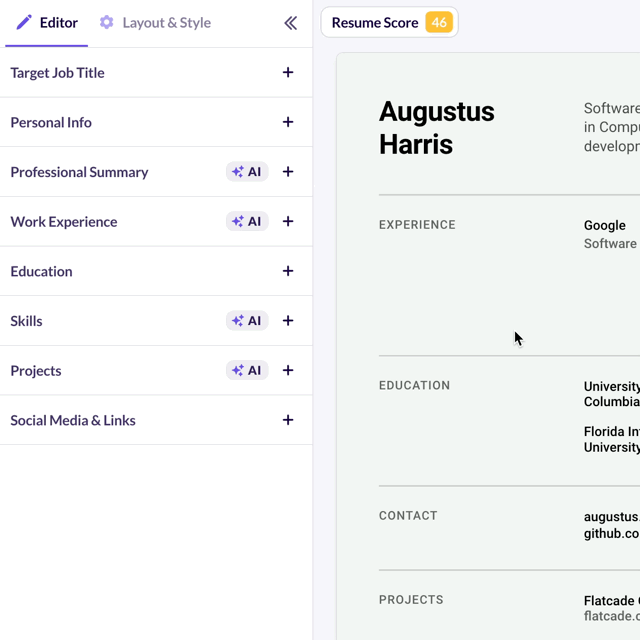Retool has been instrumental for our product team as we built AI Resume Builder at Huntr. We leveraged integrations with language models and have been able to quickly prototype, test, and iterate on various AI tasks.

Here's how we did it:
![]() Step 1: Defining AI Tasks and Prompt Testing
Step 1: Defining AI Tasks and Prompt Testing
Initially, our product team defined several AI-driven features we wanted to test, such as automatic resume summaries, role-specific bullet points, and personalized skill suggestions. We created simple Retool interfaces to rapidly design, experiment, and refine these prompts, directly interacting with language models.
![]() Step 2: Integration of Language Model Calls
Step 2: Integration of Language Model Calls
Retool’s built-in AI blocks simplified the workflow. We connected our chosen LLM (GPT-4) using Retool's native integrations, allowing us to make direct API calls without managing API endpoints or worrying about authentication complexities.
![]() Step 3: User Data Testing and Iteration
Step 3: User Data Testing and Iteration
We securely plugged in real user data from our existing databases. This allowed immediate validation of how the language models performed with authentic user information so we could adjust our prompts.
![]() Step 4: Prototyping and Logic Control
Step 4: Prototyping and Logic Control
We combined manual logic blocks with AI calls, adjusting workflows on the fly to address edge cases and user feedback. This approach minimizes the typical back-and-forth between product and engineering.
![]() Step 5: Rapid Feature Deployment
Step 5: Rapid Feature Deployment
The final result was a set of rapidly iterated and highly effective AI-driven Resume Builder features ready for integration into our main product.
 Key Takeaways:
Key Takeaways:
-
Experimentation: Retool provided a playground for quickly testing and refining AI tasks.
-
Speed and Agility: Reduced development time by empowering product teams with direct control over prototyping and iteration.
-
Seamless Integration: Leveraged Retool’s built-in integrations to implement complex AI workflows rapidly.